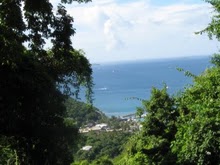 |
| Flowering Bush |
The theme for the week seems to be flowers. The trees, bushes and wildflowers everywhere are blooming magnificently and, here in Alberta at least, May long weekend and the week following is for planting flower beds and gardens. Just by chance last week, I was speaking to someone about Humming birds and the possibility of seeing them in Alberta. This person got me all fired up about attracting them to my yard since, according to her, they visit both sides of her house every year. I love Humming birds, and although I have seen them in my Mom's front yard in Ontario, I have never seen one here in Alberta.
 |
| Wildflower |
Needless to say, although the weather has been positively dreary, I spent the week planting flowers with the express purpose of
attracting Humming birds
to my front yard. Keeping in mind that humming birds need shade, as well as a place to perch and rest, or to escape predators, I planned my flowers beds accordingly. I have one right under my living room window where a nice big pine tree provides shade for much of the day. Here will go the bright red Humming bird feeders. More than one feeder is required, as Humming birds are surprisingly territorial and will fight over the feeders they consider to be part of it.
 |
| Ruby Hummer |
I also planted a variety of flowers which will be growing at differing heights. Humming birds are attracted to the color red and to flowers that are trumpet like in shape, but it is apparently important not to plant flowers that represent just one color theme. So a variety of color is best, according to all I have learned. Because Humming birds arrive in Alberta in May, I purchased flowers from a garden center in addition to planting seed.
 |
| Tree in bloom |
I planted flowers in the brightest possible colors, including blue, purple, yellow, orange and red. Among these are Morning Glory and Snapdragon, which I just love, but I also planted some flowers that I don't particularly care for. I would love to have planted some Holly Hock, which attracts Humming birds, but there simply wasn't room, as this is a very large plant. The Humming Bird feeders will go up tomorrow. Since it is now very near the end of May, I hope I haven't left it too late, as it will take time for the Humming birds to discover both my flower beds and the feeders. I will let you know the minute I meet with success in this endeavor.
Enjoy,
Susan
































